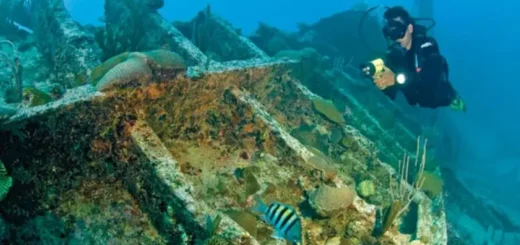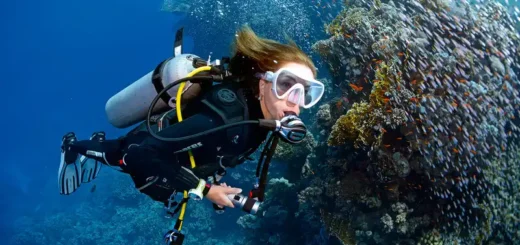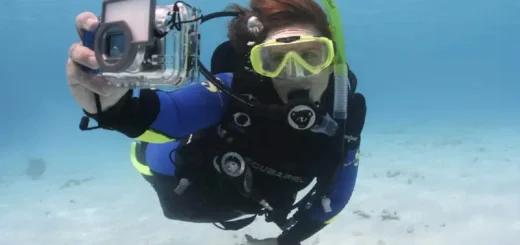Wreck Diving in the Marlborough Sounds New Zealand
Wreck diving is a type of diving that allows divers to explore and discover sunken ships and other underwater structures. The Marlborough Sounds, located at the northeastern tip of the South Island of New Zealand, is a popular destination for wreck diving due to its rich maritime history and the presence of several shipwrecks in the area.
The most popular wreck diving sites in the Marlborough Sounds include:
The Mikhail Lermontov:
This Russian cruise ship sank in 1986 and now lies in 38 meters of water. It’s considered one of the most intact shipwrecks in New Zealand and is a popular spot for both recreational and technical divers.
The Mikhail Lermontov is a Russian cruise ship that sank in 1986 in the Marlborough Sounds, New Zealand. The ship was on a cruise from Sydney to Wellington when it struck a reef and sank. All passengers and crew were safely evacuated, but the ship was unable to be salvaged and now lies in 38 meters of water.
Since then, the wreck of the Mikhail Lermontov has become a popular dive spot for recreational and technical divers. The ship is considered one of the most intact shipwrecks in New Zealand, and divers can explore the various decks and compartments of the ship, including the bridge, the dining room, and the engine room. It’s also a popular spot for marine life, divers can see a wide variety of species such as schools of fish, crayfish, octopus and the wreck itself is home to a variety of sea creatures.
Diving on the Mikhail Lermontov requires advanced diving skills and experience, as well as specialized training and equipment. Before attempting to dive on the shipwreck, divers should check that they have the proper certification and that they are comfortable with the dive site and conditions. Divers should also be aware of the potential hazards of wreck diving, such as entanglement and penetration, and always follow safe diving practices.
Overall, diving on the Mikhail Lermontov offers an opportunity to explore an intact shipwreck in the Marlborough Sounds, New Zealand and to discover the rich maritime history of the area, as well as the marine life that inhabit the shipwreck. It’s important to note that diving on the wreck requires the proper certification, equipment and experience and should be done following safe diving practices.
The HMNZS Wellington:
This Royal New Zealand Navy frigate was scuttled in 2005 and now lies in 32 meters of water. It’s a popular spot for divers interested in wreck diving, as well as in military history.
The HMNZS Wellington is a Royal New Zealand Navy frigate that was scuttled in 2005 in the Marlborough Sounds, New Zealand. The ship was decommissioned from the Navy and sunk in 32 meters of water as an artificial reef and a dive spot.
Since then, the wreck of the HMNZS Wellington has become a popular destination for recreational and technical divers. The ship is relatively intact and divers can explore various compartments and decks, including the bridge, the engine room, and the weapons systems. Additionally, the ship provides a rich marine life habitat, with a variety of marine species such as schools of fish, crayfish, and octopus can be spotted.
Diving on the HMNZS Wellington requires advanced diving skills and experience, as well as specialized training and equipment. Before attempting to dive on the shipwreck, divers should check that they have the proper certification and that they are comfortable with the dive site and conditions. Divers should also be aware of the potential hazards of wreck diving, such as entanglement and penetration, and always follow safe diving practices.
Overall, diving on the HMNZS Wellington offers an opportunity to explore a well-preserved shipwreck in the Marlborough Sounds, New Zealand, and to discover the rich maritime history of the area, as well as the marine life that inhabit the shipwreck. It’s important to note that diving on the wreck requires the proper certification, equipment and experience and should be done following safe diving practices. Additionally, due to its history as a Navy frigate, it’s also a popular spot for divers interested in military history.
The Edwin Fox:
This wooden sailing ship was built in 1853 and it is the ninth oldest ship in the world and the only one of its kind. It is now a museum ship, but it’s also a popular spot for diving.
The Edwin Fox is a historic wooden sailing ship that was built in 1853 and is the ninth oldest ship in the world, the only one of its kind. It was used as a cargo vessel and a passenger ship, operating mainly between England and Australia, and was retired in 1894. In 1897 the ship was bought by a company and used as a refrigerated storage hulk in Picton, New Zealand. Today, it’s a museum ship, open to the public and it’s also a popular spot for diving.
The ship is located in Picton, on the eastern coast of the South Island, New Zealand and it’s been scuttled in shallow water, so the ship is accessible for divers, snorkelers, and swimmers alike. Divers can explore the ship’s hull, the cargo hold, and the engine room. The ship’s history, and the marine life that inhabit the shipwreck make it an interesting diving spot.
Diving on the Edwin Fox requires little to no experience and divers can enjoy it with basic open water diver certification. Divers should be aware of the potential hazards of diving on a shipwreck, such as entanglement, and always follow safe diving practices.
Overall, diving on the Edwin Fox offers an opportunity to explore a historic shipwreck and learn about the ship’s history and the maritime history of New Zealand. It’s open to divers and snorkelers of all levels, but it’s important to note that diving on the wreck should be done following safe diving practices.
The City of Adelaide:
This wooden ship was built in 1864 and it was used as a cargo vessel and a passenger ship. It was sunk in the Marlborough Sounds in 1900, and it’s now a popular spot for diving and snorkeling.
The City of Adelaide is a wooden ship that was built in 1864 and was used as a cargo vessel and a passenger ship. It was retired in 1887, and it was used as a hulk in New Zealand until it was sunk in the Marlborough Sounds, New Zealand in 1900.
The shipwreck is located in the Marlborough Sounds, on the northeastern coast of the South Island, New Zealand, and it’s in shallow water, so it’s accessible for divers, snorkelers, and swimmers alike. Divers can explore the ship’s hull and the cargo hold, as well as the marine life that inhabit the shipwreck, such as schools of fish, crayfish, and octopus.
Diving on the City of Adelaide requires little to no experience and divers can enjoy it with basic open water diver certification. Divers should be aware of the potential hazards of diving on a shipwreck, such as entanglement, and always follow safe diving practices.
Overall, diving on the City of Adelaide offers an opportunity to explore a historic shipwreck and learn about the ship’s history and the maritime history of New Zealand. It’s open to divers and snorkelers of all levels, but it’s important to note that diving on the wreck should be done following safe diving practices.
It’s worth noting that the City of Adelaide is considered a protected historic site and diving on the wreck is only allowed under special permit and under the guidance of a professional diving company. The shipwreck is also a protected area and divers are not allowed to remove or disturb any artifacts found on the wreck.
Additionally, it’s important to be aware that the condition of the shipwreck may have deteriorated over time and divers should exercise caution when exploring the wreck. It’s always advisable to dive with a guide who is familiar with the site and the potential hazards.
In summary, diving on the City of Adelaide offers an opportunity to explore a historic shipwreck and learn about the ship’s history and the maritime history of New Zealand. The shipwreck is accessible for divers of all levels and the marine life that inhabit the shipwreck makes it an interesting diving spot.
However, it’s important to follow safe diving practices and diving on the wreck is only allowed under special permit and under the guidance of a professional diving company and divers are not allowed to remove or disturb any artifacts found on the wreck.
Wreck diving in the Marlborough Sounds requires advanced diving skills and experience, as well as specialized training and equipment. Before attempting to dive on a wreck, divers should check that they have the proper certification and that they are comfortable with the dive site and conditions. Divers should also be aware of the potential hazards of wreck diving, such as entanglement and penetration, and always follow safe diving practices.
Overall, Wreck diving in the Marlborough Sounds offers an opportunity to explore and discover sunken ships and other underwater structures, diving into the rich maritime history of the area. Divers should be aware of the specific risks and hazards of this type of diving and should have the proper certification and equipment before attempting a wreck dive.









